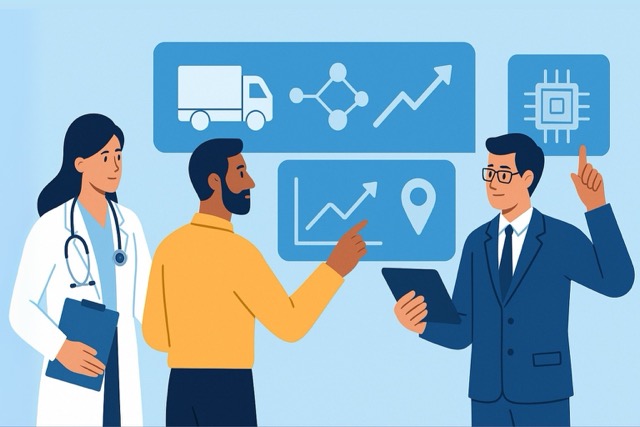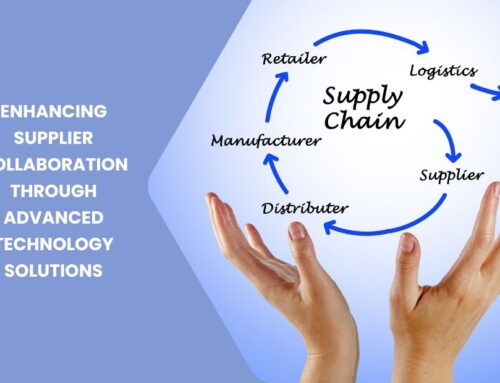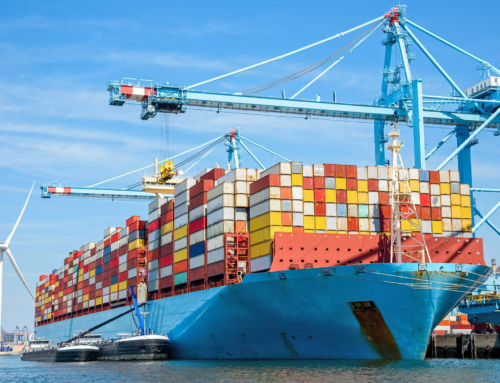As someone responsible for keeping your supply chain lean, efficient, and adaptable, you’ve likely found that the best ideas don’t always come from within your own sector. In fact, some of the most game-changing advances in logistics have their roots in healthcare and technology—industries that mastered precision, automation, and resilience long before supply chains were forced to catch up. What you’ll find here is a practical breakdown of how tools like real-time tracking, predictive analytics, and remote systems—born in hospital corridors and Silicon Valley—are being reshaped for supply chain success. The goal is simple: help you apply what’s working elsewhere to improve performance, boost agility, and reduce risk in your own operations.
Real-Time Visibility: Borrowed from Patient Monitoring
In healthcare, knowing a patient’s real-time vitals can be the difference between proactive care and a crisis. You’re seeing that same urgency move into logistics. Real-time location tracking and environmental monitoring, once used to ensure medication safety or locate hospital equipment, are now standard in freight. By using RFID tags, GPS, and IoT sensors, you can track product movement, temperature, and handling conditions as shipments travel.
This visibility lets you spot potential delays, spoilage risks, or theft instantly. Whether you’re moving vaccines, electronics, or food products, the ability to act before damage occurs has shifted from optional to expected. You’re no longer guessing—you’re managing based on data. It’s the same principle as remote telemetry in medicine, just applied to cargo.
Predictive Analytics: From Diagnosing Patients to Diagnosing Risk
Tech companies were among the first to deploy machine learning to forecast user behavior, but healthcare made it practical. Predicting disease outbreaks, treatment efficacy, or patient admissions is now mirrored in how you predict demand surges, inventory stockouts, or equipment failures.
The advantage here is proactive response. Instead of over-ordering inventory “just in case,” you’re using actual data to forecast what you’ll need and when. You’re aligning logistics decisions with live market signals and internal performance patterns—reducing waste, optimizing labor, and hitting tighter delivery targets. Whether it’s planning the best time to replenish regional distribution centers or identifying high-risk suppliers, you’re no longer reacting. You’re orchestrating.
Automation and Robotics: From Hospital Labs to Your Warehouse
Automated guided vehicles (AGVs), robotic arms, and machine vision systems transformed operating rooms and pharmaceutical labs long before they reached your loading dock. Now, these tools are giving you unmatched speed and precision in warehouse operations. You’re using robotics to sort, pick, and transport goods faster than human labor ever could—and with fewer errors.
More importantly, automation enables scale. You can manage increased throughput during peak periods without a proportional increase in labor. With AI integrated into warehouse management systems, your layout and workflows aren’t just optimized—they’re self-improving. That’s not just efficiency. That’s scalability rooted in proven healthcare tech.
Remote Monitoring and Decentralized Control: Inspired by Telemedicine
The rise of telehealth proved that critical operations don’t always need a physical presence. You’re now applying this same thinking to supply chain management. With cloud-based control towers, you can monitor warehouse conditions, fleet movements, and inventory across multiple locations from a single dashboard.
This approach is especially valuable when managing global networks or responding to disruptions like port delays, border closures, or extreme weather. You’re creating digital command centers that act like logistics “nerve centers,” where distributed teams can collaborate in real time. What started as a healthcare solution for remote diagnostics is now a logistics tool for real-time decision-making across continents.
Blockchain: Borrowed Transparency from Clinical Trials
In clinical research, trust and traceability are critical. That’s why healthcare was among the first to test blockchain—to ensure data could be audited, verified, and not tampered with. You’re seeing the same benefits when applying blockchain to track goods from origin to destination.
For high-value or regulated products, blockchain lets you build a digital ledger of every handoff. You can prove chain of custody, identify points of delay, and share secure data with customs, partners, or regulators—all without compromising data privacy. In short, you’re increasing accountability across your network without creating more paperwork.
Emergency Logistics and Crisis Response: Lessons from Healthcare’s Pandemic Playbook
When the healthcare sector had to mobilize fast during global pandemics, it revealed what true supply chain agility looks like. Pop-up testing centers, overnight PPE shipments, and emergency cold-chain expansions set the bar. You’ve likely already used some of those playbooks—re-routing shipments, sourcing from nontraditional vendors, or managing sudden spikes in demand.
Now, you’re formalizing these strategies. You’re embedding crisis protocols into your logistics software, creating redundant supplier networks, and preparing contingency inventory zones. These aren’t just emergency tactics anymore—they’re part of your daily playbook for resilience.
Smart Packaging: Innovation from Drug Safety
The pharmaceutical industry pushed the boundaries of smart packaging by integrating indicators, sensors, and tamper detection. You’re now adopting these same concepts to track spoilage in perishables, monitor shock for electronics, or detect unauthorized openings during transit.
Smart packaging is also a way to engage end customers. If you include QR codes or embedded sensors, your customers can access real-time updates or verify authenticity before accepting delivery. That increases transparency—and builds trust.
Healthcare Scheduling Meets Supply Chain Routing
Hospitals became experts at dynamic scheduling to ensure operating rooms, doctors, and equipment were all coordinated. You’re taking a page from that book by using AI to dynamically route vehicles, schedule dock appointments, and plan fulfillment around shifting real-time variables.
Instead of static schedules, you’re optimizing based on road conditions, weather, driver availability, and warehouse capacity. You’re treating every route like a surgical slot—precise, adaptable, and too valuable to waste.
Cross-Industry Collaboration Is the New Norm
Whether it’s a tech firm helping you build a control tower, a healthcare analytics company modeling your cold chain, or a blockchain startup mapping your supplier traceability, you’re not innovating alone anymore. Cross-industry partnerships are becoming a normal part of your strategy. You’re learning faster, implementing smarter, and creating solutions that stand up in complex global conditions.
Innovation used to be about inventing from scratch. Now it’s about adapting what works elsewhere. And that’s exactly what gives your operation an edge.
How Do Healthcare and Tech Innovations Improve Supply Chains?
- Real-time tracking via RFID and IoT
- Predictive analytics for demand and risk
- Robotics for warehouse automation
- Blockchain for product traceability
- Telemonitoring for remote supply chain control
In Conclusion
Cross-industry innovation isn’t just a nice idea—it’s a practical necessity in today’s fast-moving logistics world. By adapting tools proven in healthcare and technology, you’re not only solving long-standing problems but preparing your supply chain for the next wave of complexity. The speed, precision, and resilience these innovations offer don’t just improve operations—they redefine what efficient supply chain management looks like. If you’re ready to future-proof your logistics, you won’t find the answers in traditional playbooks. You’ll find them where smart industries already solved similar problems—and left a blueprint you can now scale.










